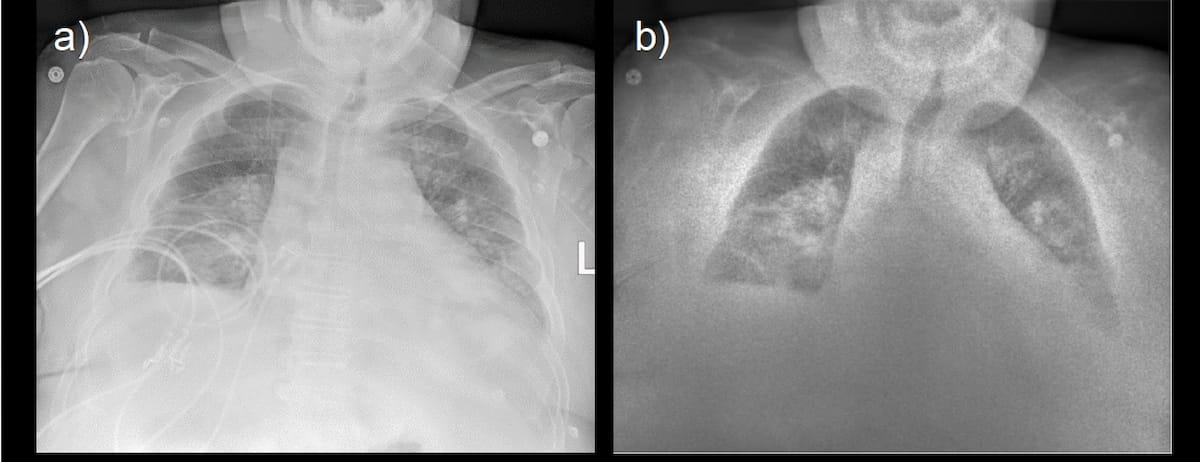Can Portable Dual-Energy X-Ray be a Viable Alternative to CT in the ICU?
The use of a portable dual-energy X-ray detector in the ICU at one community hospital reportedly facilitated a 37.5 percent decrease in chest CT exams in comparison to the previous three months, according to research presented at the American Society of Emergency Radiology (ASER) meeting in Washington, D.C.
Emerging research, recently presented at the American Society of Emergency Radiology (ASER) conference, suggests that dual-energy X-ray may provide enhanced imaging in comparison to conventional radiographs as well as a cost-effective option for patients in intensive care units (ICUs).
For the study, researchers noted the use of portable dual-energy X-ray (Reveal 35C detector, KA Imaging) in 104 out of 380 cases involving chest X-rays in the ICU at a community hospital in Ontario, Canada. They subsequently gathered feedback from 17 clinicians, including nine radiologists and eight intensivists.
Single-exposure chest radiography shows bilateral lung opacities (A) whereas a calcium-subtracted soft tissue image generated with dual-energy X-ray (B) suggests the bilateral opacities may be cavitating lesions. (Images courtesy of KA Imaging.)

Sixty-seven percent of reviewing radiologists noted enhanced image quality with dual-energy X-ray, according to KA Imaging. Researchers found that 67 percent of radiologists also noted faster reading times or no significant increase in reading time with dual-energy X-ray in contrast to conventional radiographs.
Half of the surveyed intensivists noted increased diagnostic confidence with dual-energy X-ray. KA Imaging also pointed out that intensivists employed dual-energy X-ray instead of computed tomography (CT) in seven to 14 percent of cases.
Overall, the researchers noted the use of dual-energy X-ray facilitated a 37.5 percent decline in the use of chest CT in comparison to the prior three-month period.
In an environment of capitated reimbursement in ICU settings, KA Imaging said these findings suggest that the bedside availability of portable dual-energy X-ray can provide a practical, cost-effective option for these patients.
“Along with the cost savings from each avoided CT scan, there are further benefits like avoiding re-intubation, reducing transport risks, and improving infection control,” added Amol Karnick, the president and chief executive officer of KA Imaging.
Study Suggests AI Software May Offer Standalone Value for X-Ray Detection of Pediatric Fractures
April 9th 2025Artificial intelligence (AI) software demonstrated a 92 percent sensitivity for detecting fractures in a study involving over 1,600 X-rays from a tertiary pediatric emergency department.










